ALICE ANDERSON
Direct contact for Alice Anderson:
07794-629-188
Direct link for Alice Anderson:
http://theresasimon.com/press/detail.php?id=18903
Above is the direct links for press to access images:
Users need to fill in their contact details to access the folders.
To download the images, double click on each thumbnail to open the full size version and right click to 'Save As'
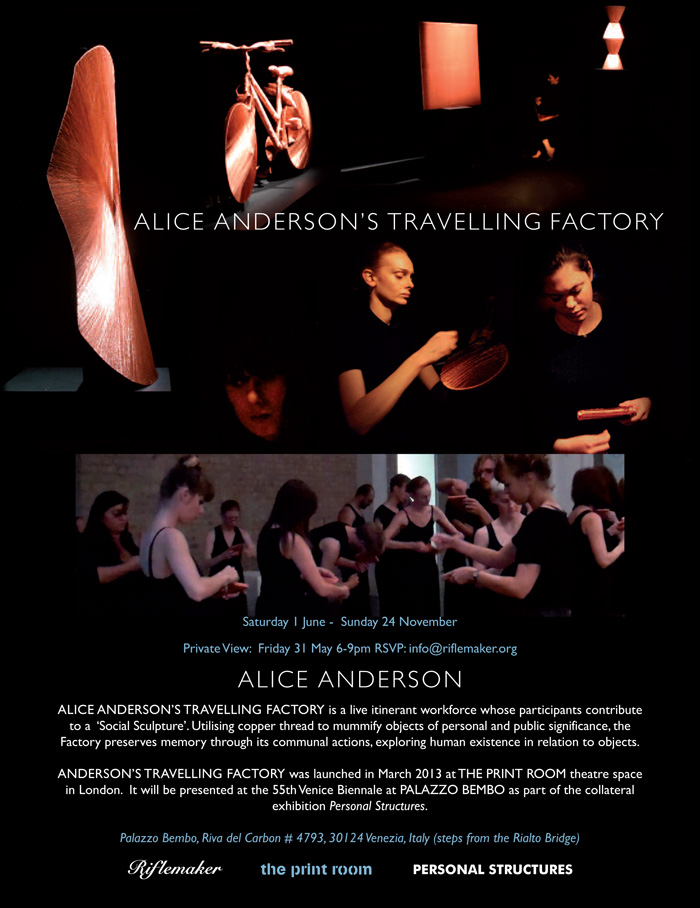
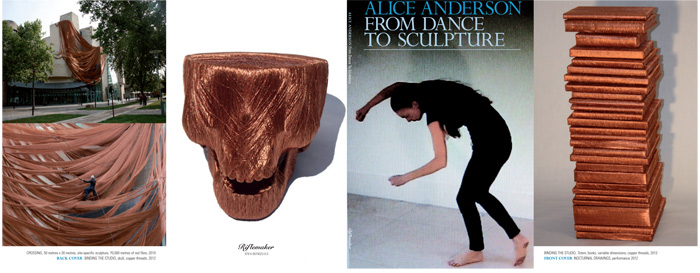
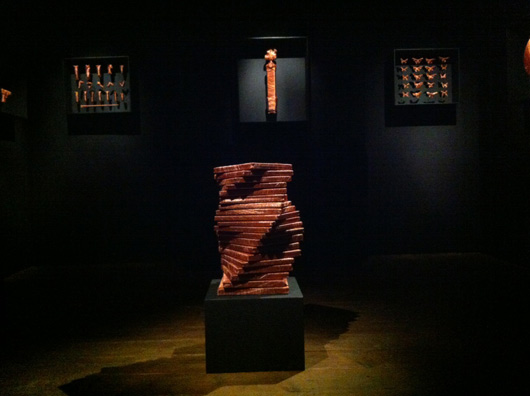
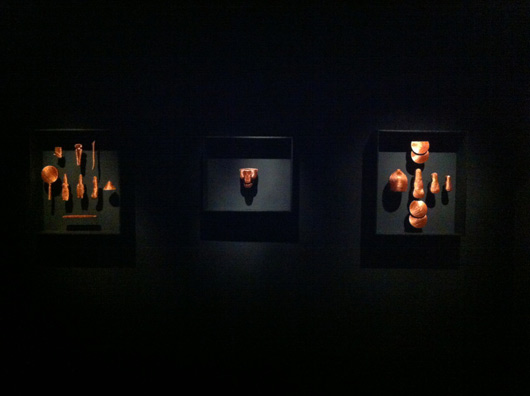
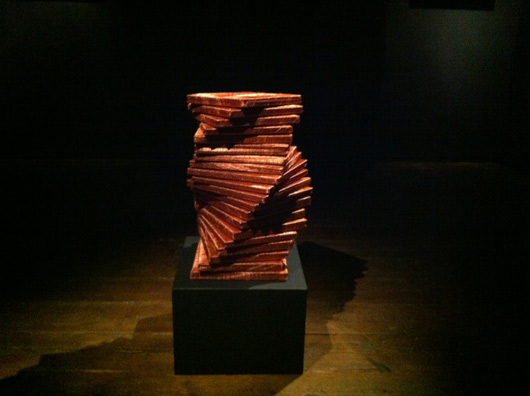
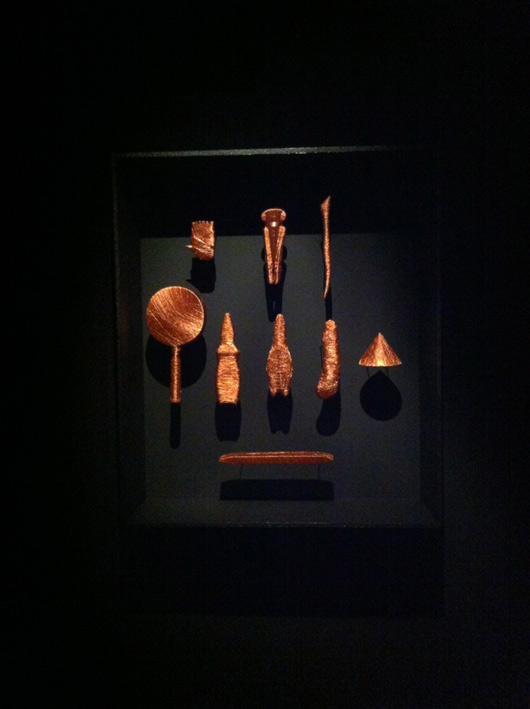
TOOLS SET, various tools, copper threads 2012
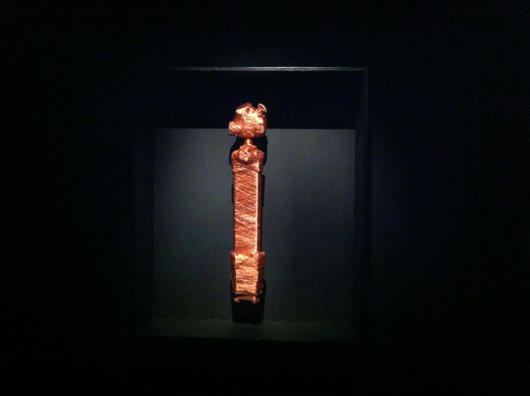
CAMERA STAND, Sony camera stand, copper threads, 2012
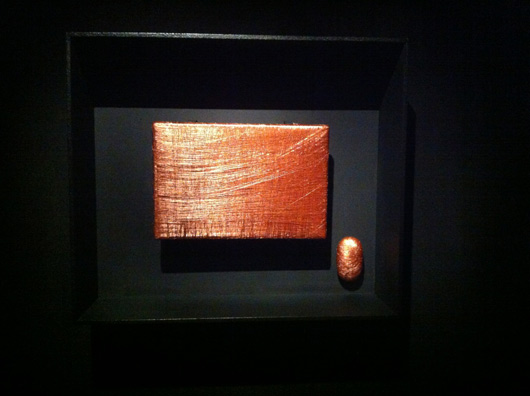
MacBook, copper threads, 2012
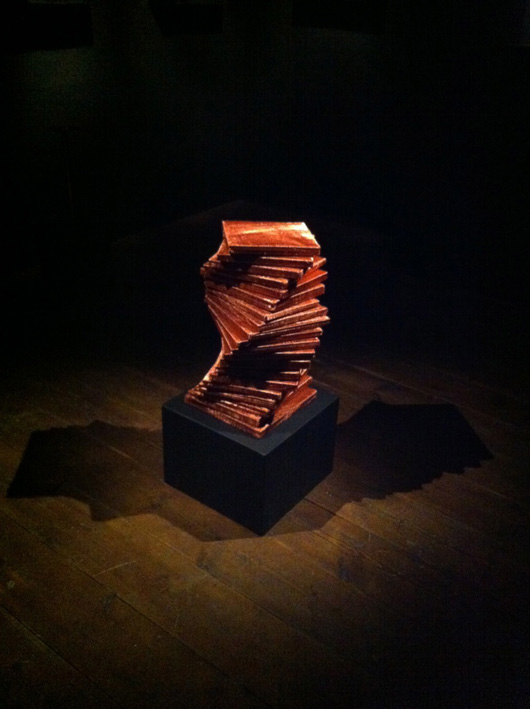
TOTEM, neurosciences books, copper treads, 2012
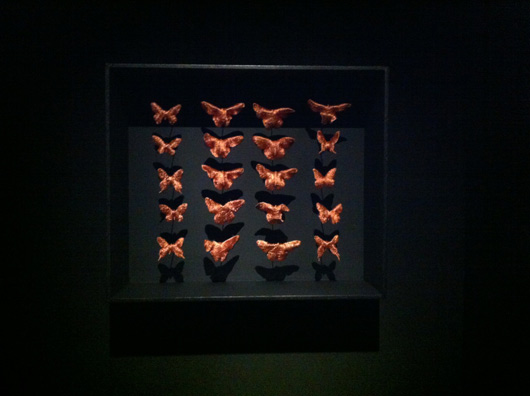
BUTTERFLIES, various butterflies, copper threads, 2012
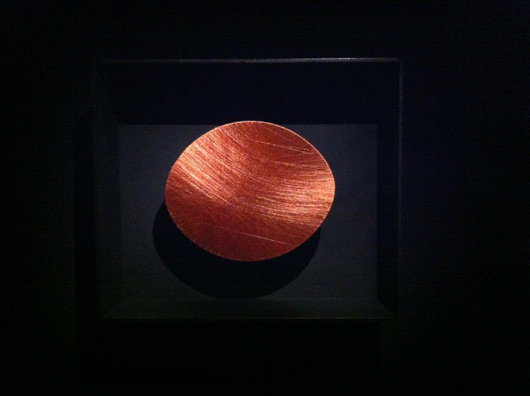
JAR, ceramic oval jar, copper threads, 2012
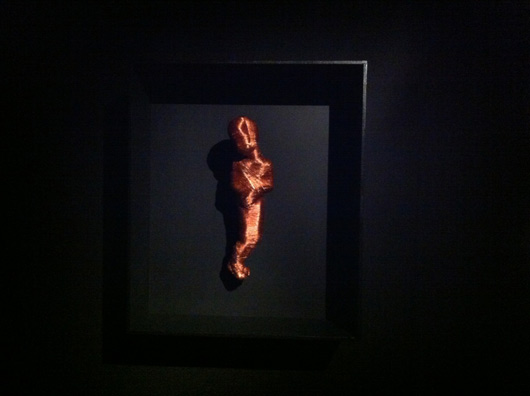
UNTITLED, plaster body, copper threads, 2012
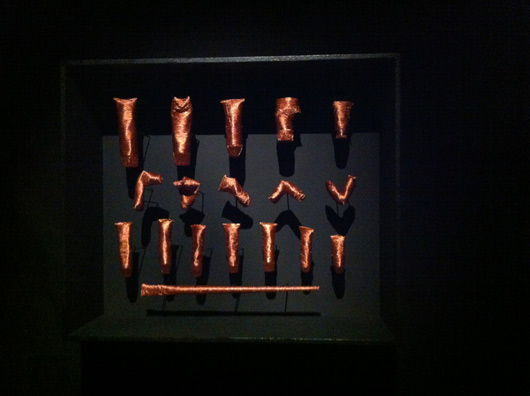
COLORS, oil colors and paintbrush, copper threads, 2012
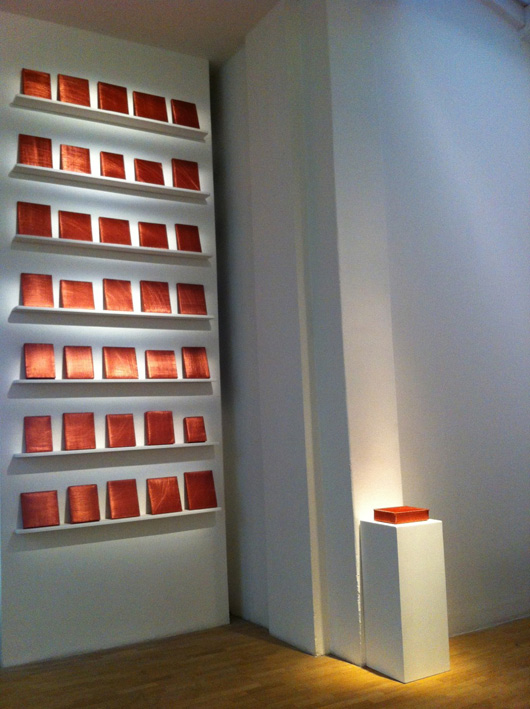
Whitechapel Art Gallery, installation of bound 'Library', September 2012
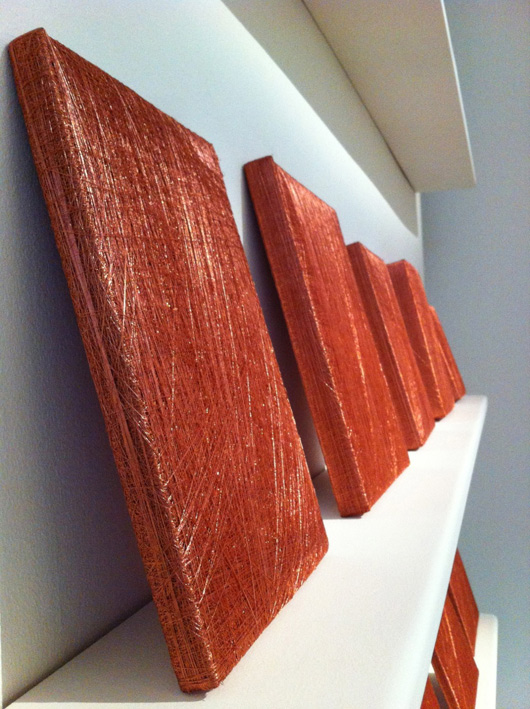
Whitechapel Art Gallery, installation of bound 'Library', September 2012
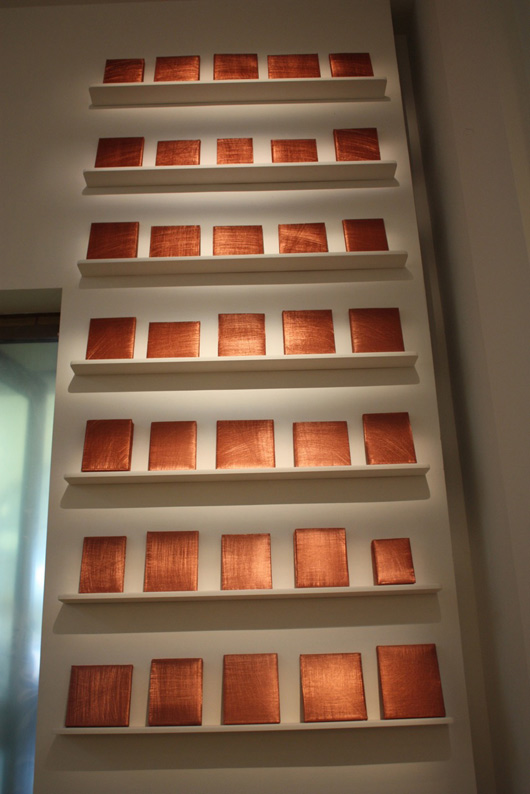
Whitechapel Art Gallery, installation of bound 'Library', September 2012
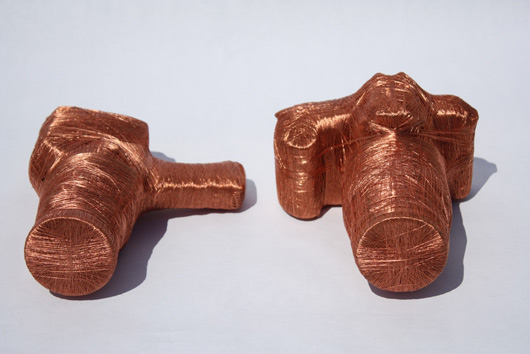
CAMERAS, Bauer super 8 camera, Canon camera, copper treads, 2012
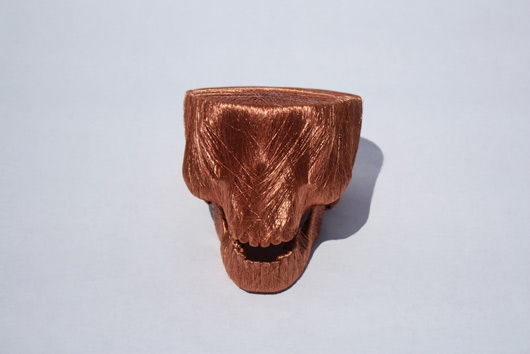
SKULL, glass skull, copper threads, 2012
The exhibition: FROM DANCE TO SCULPTURE
During the past two years, Alice Anderson's performances have focused on binding various objects and locations, using copper thread as well as her mythical red fibre, from small personal items like her laptop or gun to the Cinémathèque Française building in Paris or the Freud Museum in London.
This winding action is inspired by Anderson's childhood. She recalls inventing games; undoing threads from seams and winding them around objects. For the artist, binding an object is an act of reparation, protection, preservation and resistance.
The sculptures are the result of performances which reveal a process similar to the shamans' dances. The October exhibition FROM DANCE TO SCULPTURE shows the essence of gestures which explore human experience in relation to objects - a reflection and also a vision about the time we are living in.
GROUND FLOOR: BINDING THE STUDIO
The ground floor is turned into a factory in which Anderson and her group of performers will be making sculptures live in front of the audience. This work is part of the series BINDING THE STUDIO in which Anderson entwines the entire contents of her studio with copper thread.
The first chapter of BINDING THE STUDIO took place in early September at the Whitechapel Art Gallery and is continuing at Riflemaker. By making repetitive movements around objects, Anderson feels that she is ‘preserving’ as well as creating new forms from already existing ones.
Ist FLOOR: PRESERVATION CHAMBER
Presented in cabinets, these wound objects resemble 'curiosities' which appear to be mummified according to the ancient Egyptian's embalming process in order to achieve immortality. Like a time-capsule they are preserved and made safe representing a fixed moment suspended in eternity.

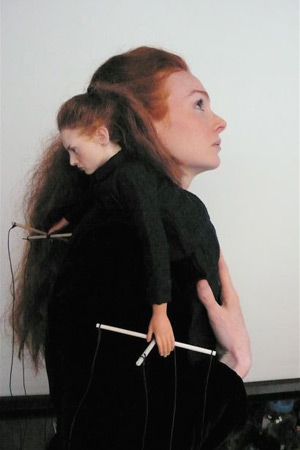
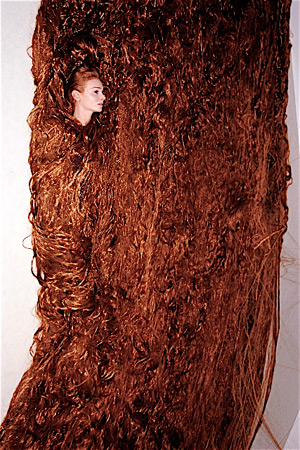
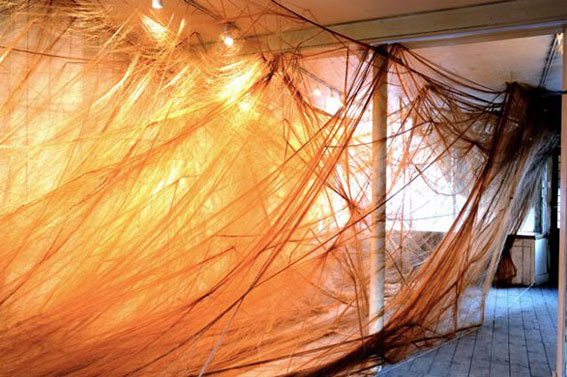
As part of this year's Deloitte Ignite, curated by Joanna MacGregor, Anglo-French artist Alice Anderson will exhibit her latest site specific sculptural installation of hair Mother Web will be exhibited at Royal Opera House for one year. Commissioned by the Deloitte Ignite festival, Mother Web is a tumbling mass of dolls' red hair (also the colour of the artist's hair) which will spread out across the ceiling and threads its way downwards to form a sort of nest, but also a spider’s web. The red hair represents the link between self and other, and more importantly, between mother and child. A seductive trap, Mother Web conveys the same ambivalence towards the maternal; it is protective and welcoming, yet threatening and oppressive, closing in on its prey like a spider's web.
Over the years, long bundles of hair have been woven into the artist's vocabulary. Anderson first used them in a disturbing installation alluding to the Brothers Grimm tale of Rapunzel, and the explicit narrative references have progressively given way to a more fundamental interest in the characteristics of hair as a material. Like threads, or ropes, Anderson believes that hair has the power to connect, while its physical contrasts and tensions can allude to extreme delicacy, yet also submerge the viewer with a wave-like density. Anderson’s mother was a classical ballet dancer in Algeria, whose absence haunts the work and whose symbolic nest is the Royal Opera House itself.
Over the years, long bundles of hair have been woven into the artist's vocabulary. Anderson first used them in a disturbing installation alluding to the Brothers Grimm tale of Rapunzel, and the explicit narrative references have progressively given way to a more fundamental interest in the characteristics of hair as a material. Like threads, or ropes, Anderson believes that hair has the power to connect, while its physical contrasts and tensions can allude to extreme delicacy, yet also submerge the viewer with a wave-like density. Anderson’s mother was a classical ballet dancer in Algeria, whose absence haunts the work and whose symbolic nest is the Royal Opera House itself.
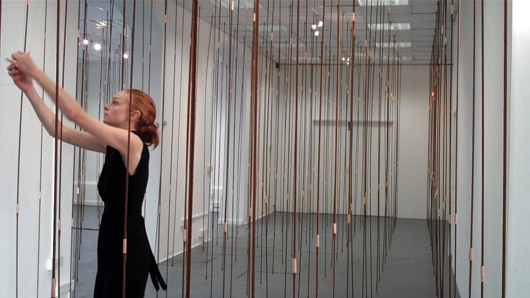
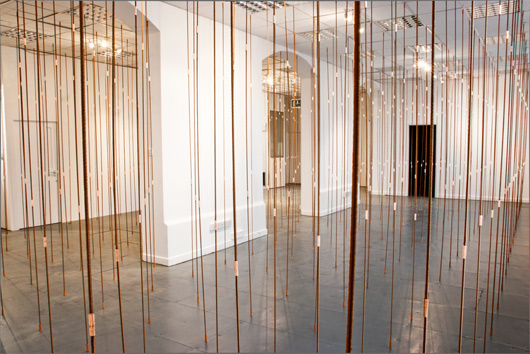
365 DAYS / sculpture, copper and red fibre pools, variable dimensions, 2011
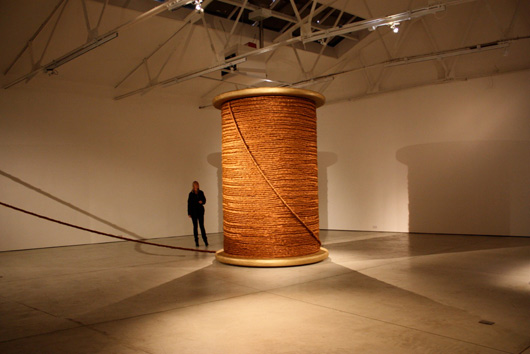
BOUND / Wooden bobbin 3.50 m, red fibre, 2011
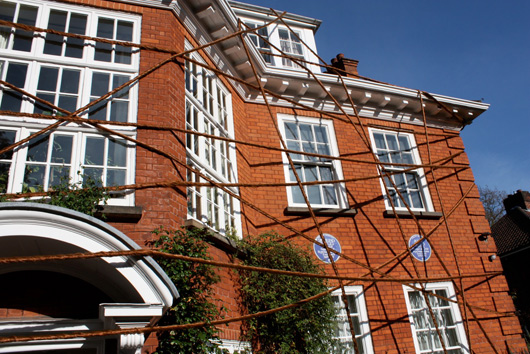
HOUSEBOUND / Site specific sculpture, 3000 meters of red fibre as ropes, 2011
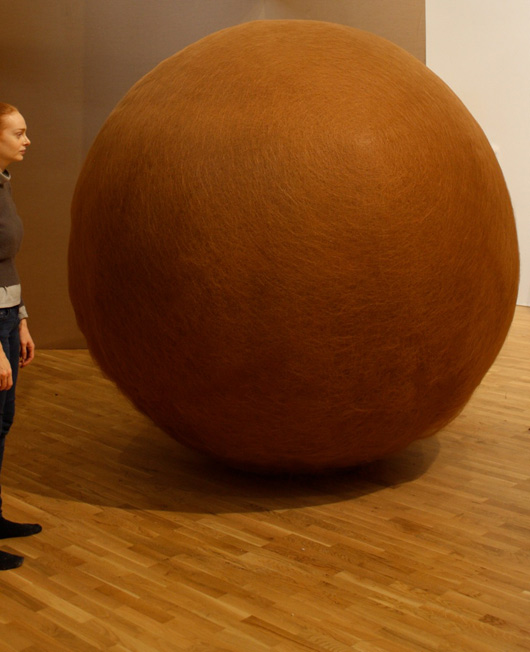
COCOON / 2 meters sphere, red fibre and mixed media, 2011
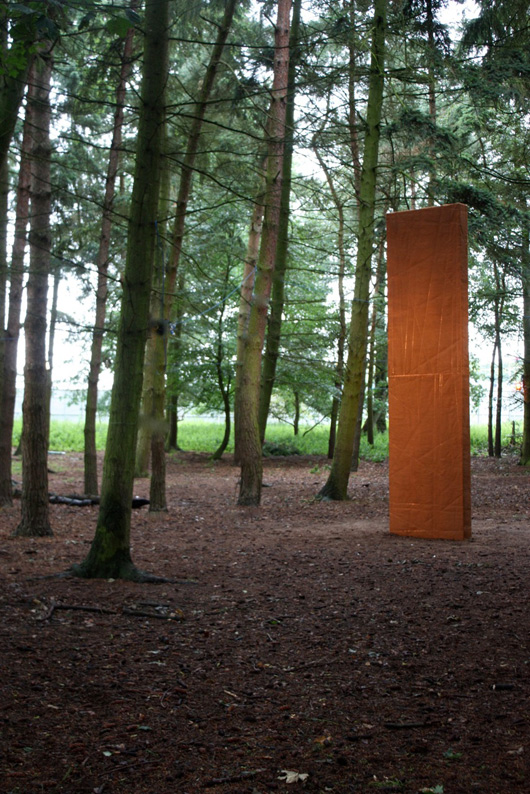
SHIELDS / 4 meters sculpture, red fibre and mixed media, 2011
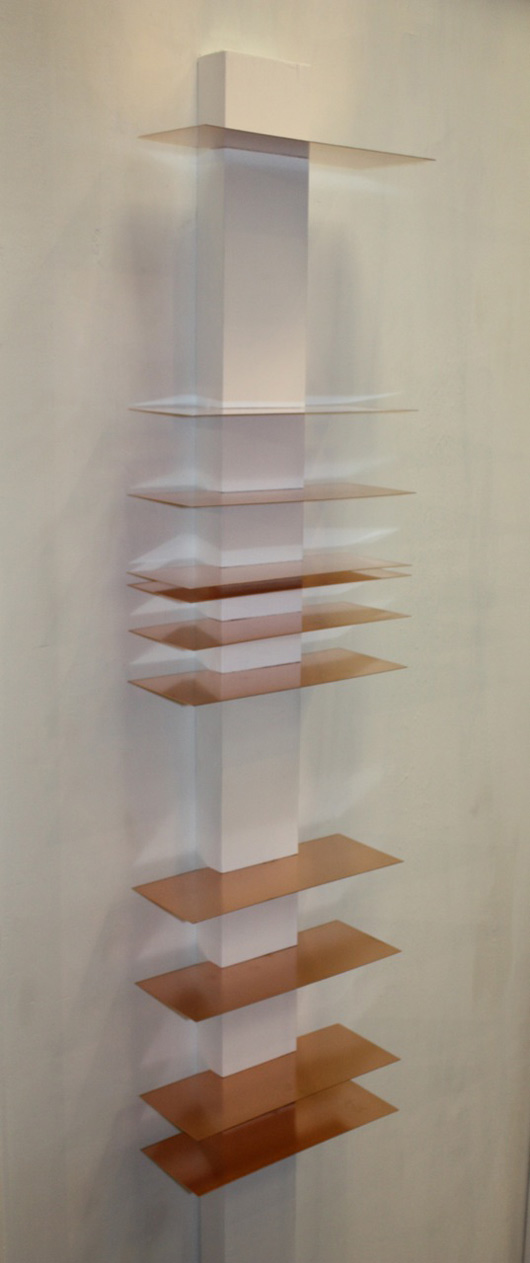
TOISE / Sculpture, 172 x 10 cm, copper plates on wood, 2011
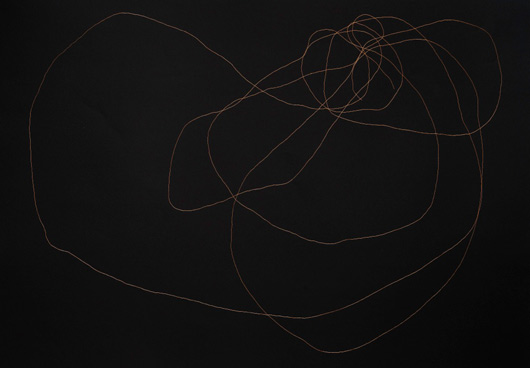
NOCTURNAL DRAWINGS / Performances on black paper, copper thread, variable dimensions, 2012
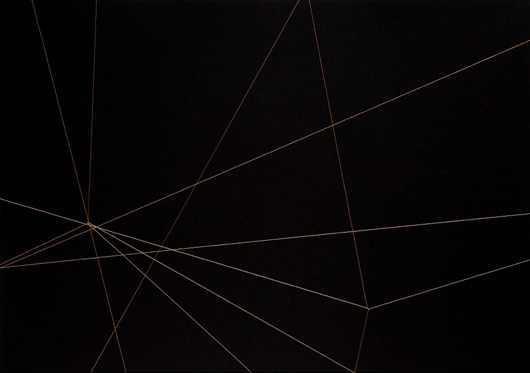
DIURNAL DRAWINGS / Performances with black paper, copper thread, variable dimensions, 2012
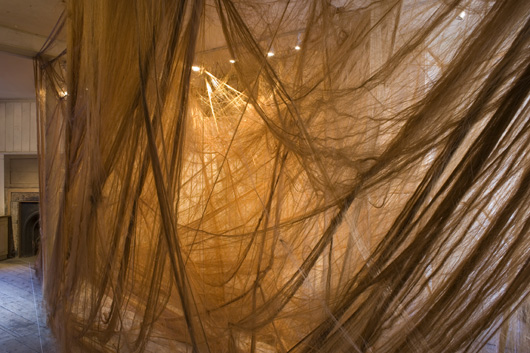
SYNAPSES, red fibre, dimensions variables, 2010
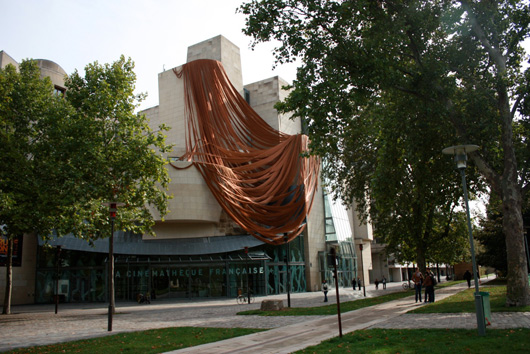
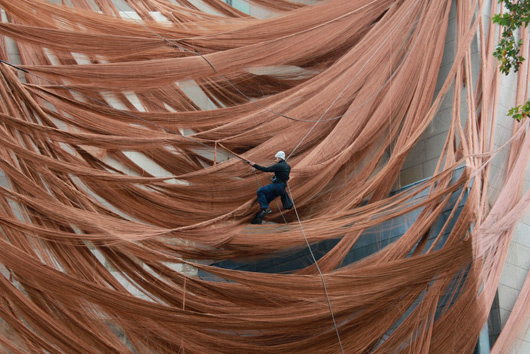
CROSSING, 50 000 m red fibre, 2011
The 3rd Ghetto Biennale 2013: Decentering the Market and Other Tales of Progress
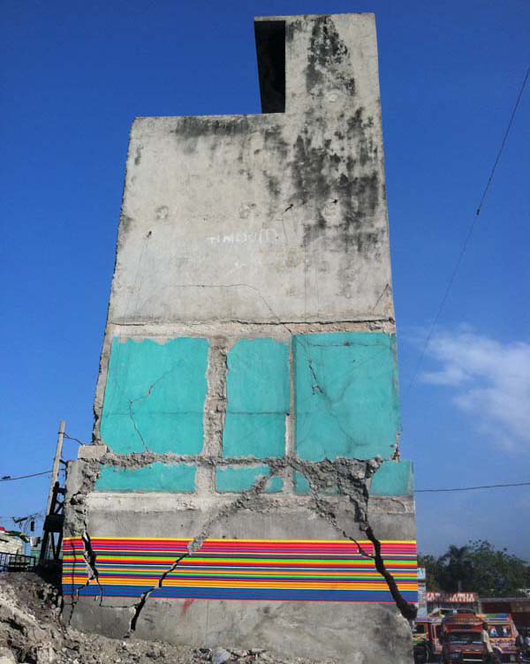
What happens when First World art rubs up against Third World art? Does it bleed?
In December 2009 Atis Rezistans, the Sculptors of Grand Rue, hosted their first Ghetto Biennale. They invited fine artists, film-makers, academics, photographers, musicians, architects and writers, to come to the Grand Rue area of Port-Au-Prince, Haiti, to make or witness work that was made or happened, in their neighbourhood. In the words of the writer John Keiffer, it was hoping to be a “'third space'...an event or moment created through a collaboration between artists from radically different backgrounds”. The 2nd Ghetto Biennale took place in December 2011 and seemed, in a contradiction to its aims, to reveal contextual, internal and institutional vulnerabilities to the inequalities that run across race, class and gender, provoking further questioning of the way these dynamics play out in an increasingly globalized art world.
While the Ghetto Biennale was conceived to expose social, racial, class and geographical immobility, it seemed to have upheld these class inertias within its structural core. The Ghetto Biennale is looking for balance amongst the multifarious and often contradictory agendas underpinning the event. Are we institutional critique or a season ticket to the institution? Are we art tourism or an exit strategy from the ghetto? What was the effect of the earthquake and the ensuing NGO culture on cross-cultural relations in Haiti? The straplines for the previous Ghetto Biennales were ‘What happens when first world art rubs up against third world art? Does it bleed?’…Did the Ghetto Biennale bleed, and if so where?
We have decided to respond to the challenges posed by the previous incarnations of this event by giving the 3rd Ghetto Biennale a theme. We are seeking artistic projects, which investigate or respond to ‘The Market’ from the local to the Global. We have also decided to make it a lens free Biennale to partially resist both the ethnographic gaze and the commodity fetishism that the lens can engender. *
The 3rd Ghetto Biennale seeks artistic projects that respond to this topic, help us to expose the boundaries of a globalized art market, and have meaningful discussion about sameness and diversity in an allegedly de-centered art world. The 3rd Ghetto Biennale in Port-au-Prince is trying to create a space for artistic production that attempts to offer, whilst understanding all its limitations, artists from wide socioeconomic classes, a complex creative platform. The Ghetto Biennale hopes to contain the seeds of a possibility to transcend different models of ghettoization…please help us to fail nobly.
The 3rd Ghetto Biennale 2013 will take place from the end of November until the middle of December 2013, the exact dates to be confirmed. All works must be made and exhibited in Haiti. Artists will be invited to pass one to three weeks in Haiti before presenting their work in the neighbourhood to an audience of local people, Port au Prince neighbourhood communities, arts collectives and arts organisations. The 3rd Ghetto Biennale will be co-curated by Andre Eugene, David Frohnapfel and Leah Gordon.
The deadline for proposal applications is midnight Sunday 23rd June and our decisions will be made and announced by the end of the first week in July. The primary criteria will be based on practical issues of production viability in the Grand Rue locality.
Applicants for the 3rd Ghetto Biennale 2013 must provide a written synopsis of their project proposal covering conceptual background, methodology, and the production and exhibition strategy for the proposed new work on two sides of A4, including illustrations, and a one page CV, all formatted as pdfs. We will not accept any proposal longer than two sides and neither will we accept website links as a proposal component. Please keep in mind that we are looking for works that will be created during the three week period in Port au Prince, Haiti. We are not looking for work that is already created. We welcome projects that may require collaboration with local artists and would be able to help connect artists beforehand.
There is no funding for this event and you will be expected to cover the cost of your flight, accommodation and materials. We will supply a reading list, there is a film about the Grand Rue sculptors on-line and we will be more than happy to help (via email) with any research and information needed, both before your application and leading up to the event. Advice can be given about the practicalities for the production of specific projects and budgeting for the trip. If your work involves intensive interviews we will advise you to budget for your own translator. Artists should be aware that Haiti has only a 50% literacy rate and text heavy projects could be problematic for the local audience. We can help organise all hotel bookings, airport pick-ups and internal transport.
* No video and photography projects will be considered, but there will be a photographer on site to document the projects at the end of the event for anyone needing images to fulfil funding requirements.
'Atis-Rezistans: the Sculptors of Grand Rue' can be viewed at http://vimeo.com/14681755
Find more information about Atis-Rezistans visit www.atis-rezistans.com
Check out the project archives of the last two Ghetto Biennales www.ghettobiennale.com
In December 2009 Atis Rezistans, the Sculptors of Grand Rue, hosted their first Ghetto Biennale. They invited fine artists, film-makers, academics, photographers, musicians, architects and writers, to come to the Grand Rue area of Port-Au-Prince, Haiti, to make or witness work that was made or happened, in their neighbourhood. In the words of the writer John Keiffer, it was hoping to be a “'third space'...an event or moment created through a collaboration between artists from radically different backgrounds”. The 2nd Ghetto Biennale took place in December 2011 and seemed, in a contradiction to its aims, to reveal contextual, internal and institutional vulnerabilities to the inequalities that run across race, class and gender, provoking further questioning of the way these dynamics play out in an increasingly globalized art world.
While the Ghetto Biennale was conceived to expose social, racial, class and geographical immobility, it seemed to have upheld these class inertias within its structural core. The Ghetto Biennale is looking for balance amongst the multifarious and often contradictory agendas underpinning the event. Are we institutional critique or a season ticket to the institution? Are we art tourism or an exit strategy from the ghetto? What was the effect of the earthquake and the ensuing NGO culture on cross-cultural relations in Haiti? The straplines for the previous Ghetto Biennales were ‘What happens when first world art rubs up against third world art? Does it bleed?’…Did the Ghetto Biennale bleed, and if so where?
We have decided to respond to the challenges posed by the previous incarnations of this event by giving the 3rd Ghetto Biennale a theme. We are seeking artistic projects, which investigate or respond to ‘The Market’ from the local to the Global. We have also decided to make it a lens free Biennale to partially resist both the ethnographic gaze and the commodity fetishism that the lens can engender. *
The 3rd Ghetto Biennale seeks artistic projects that respond to this topic, help us to expose the boundaries of a globalized art market, and have meaningful discussion about sameness and diversity in an allegedly de-centered art world. The 3rd Ghetto Biennale in Port-au-Prince is trying to create a space for artistic production that attempts to offer, whilst understanding all its limitations, artists from wide socioeconomic classes, a complex creative platform. The Ghetto Biennale hopes to contain the seeds of a possibility to transcend different models of ghettoization…please help us to fail nobly.
The 3rd Ghetto Biennale 2013 will take place from the end of November until the middle of December 2013, the exact dates to be confirmed. All works must be made and exhibited in Haiti. Artists will be invited to pass one to three weeks in Haiti before presenting their work in the neighbourhood to an audience of local people, Port au Prince neighbourhood communities, arts collectives and arts organisations. The 3rd Ghetto Biennale will be co-curated by Andre Eugene, David Frohnapfel and Leah Gordon.
The deadline for proposal applications is midnight Sunday 23rd June and our decisions will be made and announced by the end of the first week in July. The primary criteria will be based on practical issues of production viability in the Grand Rue locality.
Applicants for the 3rd Ghetto Biennale 2013 must provide a written synopsis of their project proposal covering conceptual background, methodology, and the production and exhibition strategy for the proposed new work on two sides of A4, including illustrations, and a one page CV, all formatted as pdfs. We will not accept any proposal longer than two sides and neither will we accept website links as a proposal component. Please keep in mind that we are looking for works that will be created during the three week period in Port au Prince, Haiti. We are not looking for work that is already created. We welcome projects that may require collaboration with local artists and would be able to help connect artists beforehand.
There is no funding for this event and you will be expected to cover the cost of your flight, accommodation and materials. We will supply a reading list, there is a film about the Grand Rue sculptors on-line and we will be more than happy to help (via email) with any research and information needed, both before your application and leading up to the event. Advice can be given about the practicalities for the production of specific projects and budgeting for the trip. If your work involves intensive interviews we will advise you to budget for your own translator. Artists should be aware that Haiti has only a 50% literacy rate and text heavy projects could be problematic for the local audience. We can help organise all hotel bookings, airport pick-ups and internal transport.
* No video and photography projects will be considered, but there will be a photographer on site to document the projects at the end of the event for anyone needing images to fulfil funding requirements.
'Atis-Rezistans: the Sculptors of Grand Rue' can be viewed at http://vimeo.com/14681755
Find more information about Atis-Rezistans visit www.atis-rezistans.com
Check out the project archives of the last two Ghetto Biennales www.ghettobiennale.com